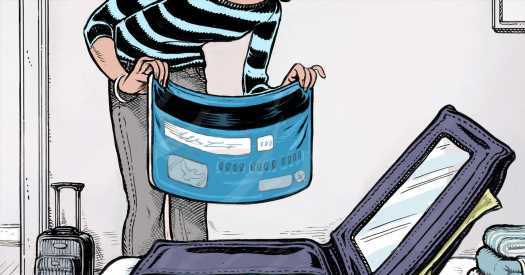The joy in planning a vacation in European comes from booking Mediterranean boat trips or researching restaurants in Paris, not the boring details of how you pay for those experiences. But there I was, stuck in a parking lot in Lerici, Italy, because I had forgotten to set up a personal identification number on my credit card (many unmanned kiosks in Europe, like parking ticket machines, require one). That I write about such things for a living only makes the story more embarrassing, so the following checklist has been a crucial part of my European travel prep ever since.
Bring at least two credit cards from different networks
A well-chosen travel credit card should be your main form of payment in Europe. From the London Tube to a neighborhood patisserie, the fraud protection a card offers is unbeatable: You would rather have a thief using your card for their Mitte district shopping spree in Berlin than depleting your actual bank account with your A.T.M. card. Also, the larger spending limit won’t crimp your style if a hotel or a rental-car company places a 200 euros hold on the card.
Pick a credit card that does not charge a foreign transaction fee and you’ll save yourself up to 3 percent of each purchase. And if you have an American Express or Discover card, carry a Visa or Mastercard too, since these cards are more widely accepted abroad.
Before you leave, alert your bank that you’ll be traveling, either with a phone call or through its app. This should let you use your card without incident, although overly cautious financial institutions sometimes mess up and ping you with a fraud alert anyway. While in touch with your bank, see if it allows you to set a P.I.N. on the card (some cards, like the Bank of America Travel Rewards credit card, give you the option). If you don’t have a P.I.N., you should still be able to use your credit card in person, and some unmanned kiosks sometimes allow you to skip this step. Chase, which issues Wirecutter’s favorite travel rewards card, recommends you push the Enter, Continue, or Cancel button when asked for your P.I.N. If these don’t work, you’ll have to pay in cash.
Bring one debit card that you can use at European A.T.M.s
Smaller shops may not accept cards or might “pass on the extra processing fees associated with credit cards to customers,” said Aaron Klein, a Brookings Institution fellow.
So if you want to pay for that pieróg in cash, consider opening a checking account that doesn’t nickel-and-dime you abroad. The ideal option doesn’t charge A.T.M. fees, reimburses A.T.M.-operator expenses worldwide, and forgoes foreign transaction fees. Ken Tumin, founder of DepositAccounts.com, recommends the Schwab Bank High Yield Investor Checking Account, which gives you those benefits. (You need a Charles Schwab brokerage account to get that checking account, but neither one requires a minimum balance.)
If you don’t want to set up a bunch of accounts just to avoid fees, check your bank’s international A.T.M. partners. Bank of America customers can avoid fees in a host of countries by using designated partner machines (Deutsche Bank in Germany, for example). You likely get better exchange rates at an A.T.M. than you do at a currency-exchange window, or from your bank before you depart.
Bring your mobile wallet
Apple Pay and other digital wallets are picking up steam abroad, and these mobile contactless payment systems (where you wave your phone in front of a payment terminal) could save you a lot of hassle — especially if you lack cash or don’t want to fumble with your wallet.
Make sure you’ve loaded your cards with no foreign transaction fees on your phone before you take off. Apple Pay should work even if you’re in airplane mode, so you don’t need a local SIM card to use it.
Taylor Tepper is a senior staff writer at Wirecutter, a New York Times company that reviews and recommends products. A version of this article also appears at Wirecutter.com.
52 PLACES AND MUCH, MUCH MORE Follow our 52 Places traveler, Sebastian Modak, on Instagram as he travels the world, and discover more Travel coverage by following us on Twitter and Facebook. And sign up for our Travel Dispatch newsletter: Each week you’ll receive tips on traveling smarter, stories on hot destinations and access to photos from all over the world.
Source: Read Full Article
